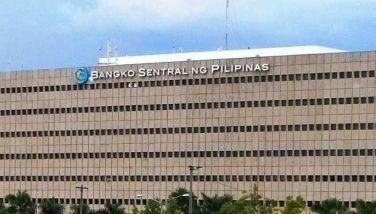Fil-Estate considers property development, financial services to boost revenues
October 3, 2004 | 12:00am
Fil-Estate Corp. (FPC) plans to go into real estate development and the financial services business in line with efforts to improve its profitability, according to company chairman Robert John Sobrepeña.
Fil-Estate is one of the key partners in the Metro Rail Transit Corp. consortium that built the first phase of the MRT-3 from Edsa Taft to North Avenue.
Sobrepeña said the company is looking at venturing into other areas such real estate and financial services in order to reduce reliance on the MRT Phase 2 extension project as a future source of additional revenues.
The construction of the MRT Phase 2 project has been delayed due to some legal issues that still need to be ironed out. The Department of Justice came out with a ruling that the supplemental agreement entered by the MRT 3 consortium and the Department of Transportation and Communications for the construction of the extension project had already lapsed. For this reason, the DOTC said the MRT Phase 2 project should be subjected to a Swiss challenge or another public bidding.
A Swiss challenge is a mechanism that allows other interested entities to submit offers that are better than that of the original proponent. The original proponent, however, is allowed to adjust its proposal to beat that of the lowest bidder.
Fil-Estate continues to believe that Phase 2 is a viable project that is best undertaken by MRTC in light of the connection to the existing train system and in light of the provisions of the build-lease-transfer agreement.
Upbeat on its growth prospects, Fil-Estate Corp. is eyeing a net income of P139 million this year, or an increase of 15 percent from P121 million in 2003. For 2005 and 2006, the company projects to post profits of P300 million and P350 million, respectively.
Sobrepeña said Fil-Estate is open to acquiring companies in order to improve future revenues. "FEC will continue to study this option if and when the same becomes feasible," he said.
The MRT Phase 2 is supposed to bring MRT III in full circle with the Light Rail Transit (LRT) II as it will run some five kilometers from North Avenue to Roosevelt, Balintawak and Monumento. Once started, construction period is expected to be around 24 months.
With the MRT-3 linked to the LRT-1, the ridership is expected to increase to 1.3 million passengers a day from the current peak ridership of 452,000 a day, Sobrepeña said.
Sobrepeña estimates that in 2030, Phase I revenues will grow to $100 million and to $300 million with phase II combined. With the MRT consortium as project implementor for Phase II, the government is expected to save an additional project cost of $50 million for a separate depot and $5 million for a separate station at the North Avenue, he said.
Fil-Estate is one of the key partners in the Metro Rail Transit Corp. consortium that built the first phase of the MRT-3 from Edsa Taft to North Avenue.
Sobrepeña said the company is looking at venturing into other areas such real estate and financial services in order to reduce reliance on the MRT Phase 2 extension project as a future source of additional revenues.
The construction of the MRT Phase 2 project has been delayed due to some legal issues that still need to be ironed out. The Department of Justice came out with a ruling that the supplemental agreement entered by the MRT 3 consortium and the Department of Transportation and Communications for the construction of the extension project had already lapsed. For this reason, the DOTC said the MRT Phase 2 project should be subjected to a Swiss challenge or another public bidding.
A Swiss challenge is a mechanism that allows other interested entities to submit offers that are better than that of the original proponent. The original proponent, however, is allowed to adjust its proposal to beat that of the lowest bidder.
Fil-Estate continues to believe that Phase 2 is a viable project that is best undertaken by MRTC in light of the connection to the existing train system and in light of the provisions of the build-lease-transfer agreement.
Upbeat on its growth prospects, Fil-Estate Corp. is eyeing a net income of P139 million this year, or an increase of 15 percent from P121 million in 2003. For 2005 and 2006, the company projects to post profits of P300 million and P350 million, respectively.
Sobrepeña said Fil-Estate is open to acquiring companies in order to improve future revenues. "FEC will continue to study this option if and when the same becomes feasible," he said.
The MRT Phase 2 is supposed to bring MRT III in full circle with the Light Rail Transit (LRT) II as it will run some five kilometers from North Avenue to Roosevelt, Balintawak and Monumento. Once started, construction period is expected to be around 24 months.
With the MRT-3 linked to the LRT-1, the ridership is expected to increase to 1.3 million passengers a day from the current peak ridership of 452,000 a day, Sobrepeña said.
Sobrepeña estimates that in 2030, Phase I revenues will grow to $100 million and to $300 million with phase II combined. With the MRT consortium as project implementor for Phase II, the government is expected to save an additional project cost of $50 million for a separate depot and $5 million for a separate station at the North Avenue, he said.
BrandSpace Articles
<
>
- Latest
- Trending
Trending
Latest
Trending
Latest
Recommended




























